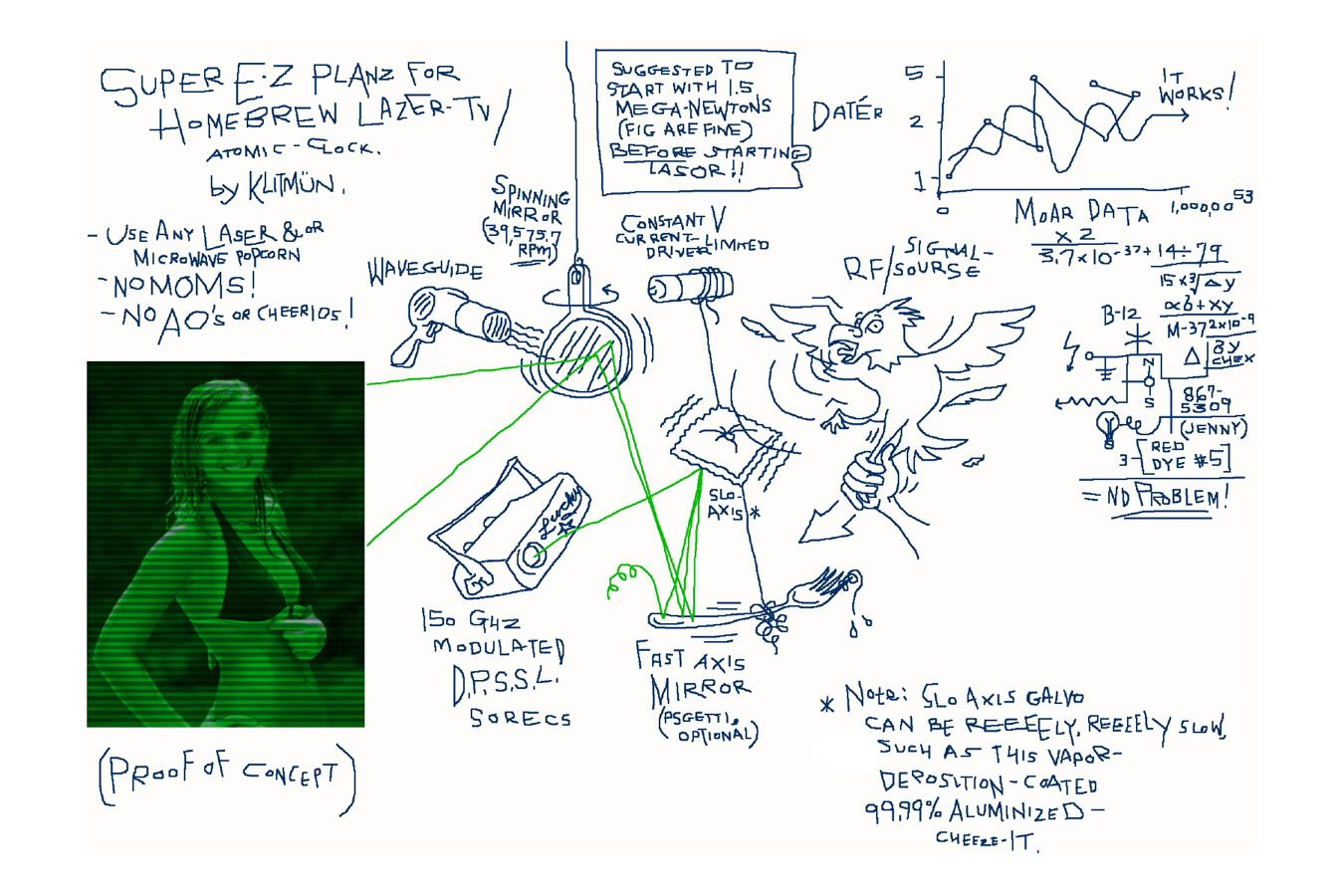I was wrong, those mirrors from DLP are way too fast to be used as a vibrating mirrors (minimum switching frequency is 40MHz...)
By the way. Let's say we have a system with a very low inertia (I calculated 4,76e-11 kg*m^2), I don't know the k (spring constant) of my system but I assume it is pretty high (by now I won't say what my setup is, just follow me in my reasoning

). I can also apply a very high magnetic force to my vibrating mirror (I calculated with the aid of my university physics professor a very high angular momentum, something about 2500 N*m if I remember well). So I think I can have a very low inertia, high force setup. I think I can drive it at high frequencies with a good angle. Maybe if I can also drive it in vacuum it will be very interesting. I will thane a look about this.
So, if I can increase the frequency I can use higher resolutions. HD anyone?
As I want to use full cycles and not only half of them I have to reverse odd lines from a progressive video source. sltvm2007 made this by outputting the video with odd lines and odd frames reversed via software. As I am studying as electronic engineer I prefer to use an hardware solution

So I was thinking about a FPGA, as I can't find nothing simpler in order to process HD signal. The connectivity will be a DVI-D connector (single link, up to 1920*1200@60Hz with reduced blanking) and the video signal will be processed in a digital way before entering an high speed video DAC stage (ADV7125 I think). And now the most delicate part. Lasers.
138,24MHz of analog modulation is "a little bit" high XD
In order to have a frequency so high the diode has to be driven in a current fashion in its linear region. I am thinking about two fast operational amplifiers that "push-pull" the diode, giving also the possibility to add some bias to it and isolate it from the rest of the circuit. Maybe in this way I will be able to modulate diodes at such fast frequencies. Not simple at all. Maybe it will require a thermo-electric cell on the crystal of the green laser in order to make it thermally stable.
I know I'm going far away from the DIY idea, but I like this project and I want to expand it

Let me see what do you think about it









